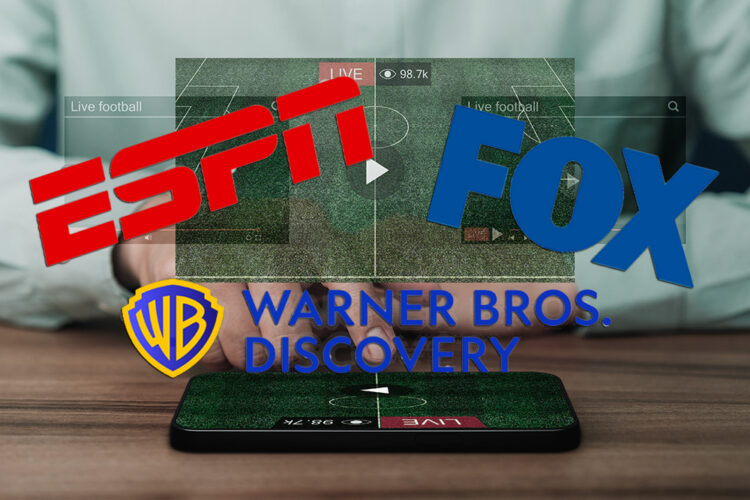Changing channel: Brands need long-term recall for CTV success

Opinion
Connected TV is an ideal channel to bring branding and performance marketing together as brands shift adspend into streaming platforms.
This year has seen a host of new developments in the Connected TV space.
Amazon Prime Video introduced ads, following up quickly with the launch of new interactive and shoppable formats, while the UK’s Freely service arrived offering live and on-demand streaming. Netflix, a standout performer, saw a 150% rise in ad sales for 2023 after launching its lower-cost, ad-supported service, boosting revenue and stock performance.
As brand investment continues to rise, so too do measurement expectations. Of course, CTV is far more trackable than its predecessor, allowing brands to monitor performance metrics from their executions. At the surface, it’s an easier world to tie branding efforts back to measurable outcomes.
However, branding relies heavily on recall, which is something that builds over time. The key challenge brands face with CTV is the persistent absence of a scalable, accurate identity framework that can track individuals consistently.
Without such a framework, it’s difficult for brands to connect their branding efforts to measurable performance outcomes. To succeed in this new era of TV advertising, brands need a unified solution that can consolidate CTV activations, cap frequencies at the user level, and maintain long-term connections with individuals as they move through the marketing funnel.
The fragmentation challenge
Compounding the situation is the fragmented nature of the CTV landscape.
For consumers, the plethora of platforms offers them an unprecedented amount of choice. But for advertisers, it adds layers of complication to an already busy media plan. Brands now need to navigate multiple platforms to run campaigns, which can lead to media budget overlap, duplication, and inefficiencies.
This fragmentation can also lead to discrepancies in metrics and difficulties in verifying where ads are truly being seen, making it easier for low-quality or fraudulent inventory to slip through and go undetected. Even where ads are shown in the right places, fragmentation weakens the consistency of brand messages, as advertisers struggle to achieve unified targeting and frequency capping across platforms.
To unlock the full potential of CTV, brands must address this fragmentation with advanced technology solutions that provide a seamless, data-driven strategy across the entire customer journey. Accurately factoring in browsing habits, purchase history and engagement allows better targeting and verification of user interactions, ensuring brands are reaching genuine audiences rather than bots or fraudulent accounts.
In turn, they can go beyond traditional metrics like attention and recall. These are strengthened by deeper insight into how long-term awareness impacts sales, profit, and lifetime value, which is a real game changer, aligning brand awareness and performance more closely, ensuring that each ad dollar is well-spent.
The rise of ‘Brandformance’
This brings us to the concept of “Brandformance,” where branding and performance marketing converge.
CTV is an ideal channel to drive this convergence, thanks to its ability to provide measurable outcomes from brand executions as we’re seeing with the introduction of shoppable formats.
This is particularly important as more brands shift their ad spend into streaming platforms. In fact, it’s predicted that CTV ad spend will surpass $42bn by 2028. The enormous potential lies in CTV’s ability to combine brand-building with precise targeting.
For instance, ESPN, Fox, and Warner Bros Discovery are planning to launch a new platform this autumn, which will feature major professional sporting events. Imagine a viewer watching a live sports game; brands could leverage that moment to offer an interactive, limited-time offer via Deliveroo.
As more platforms come online and the market continues to evolve, streaming services will have their ‘golden age’ with advertisers. But it’s only with better targeting capabilities and enhanced audience engagement that ad-supported streaming can hope deliver on its promise and sustain demand.
First-party data activation in CTV
Remember that data is the foundation on which all of this rests.
First-party data activation still represents one of the most untapped opportunities in CTV. Partnerships between CTV platforms and retailers are fast tracking progress by enriching the data available for targeting. For example, Roku’s partnership with Currys, enabling brands to target viewers based on actual shopping patterns.
As CTV evolves, brands like FatFace that effectively leverage first-party data and take advantage of the right partnerships — in a way that ladders into a unified solution — are demonstrating the value of such multi-channel activations. Customers exposed to FatFace ads across connected TV, online video, and display are 3.8x more likely to visit the website and 4.1x more likely to make a purchase, both online and in-store.
This kind of approach ensures efficient media spending and allows brands to track the full impact of their campaigns — whether it’s brand recall, sales performance, or customer lifetime value.
Moreover, this strategy helps bring marketing and performance teams closer together, aligning them toward common goals of driving both awareness and measurable outcomes.
 Maria Giacobbe is SVP, business development at Epsilon
Maria Giacobbe is SVP, business development at Epsilon




